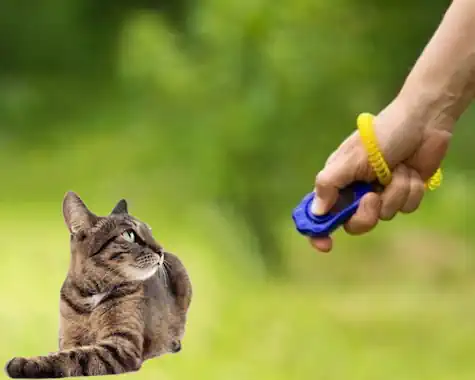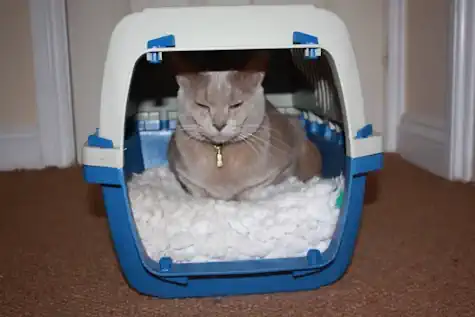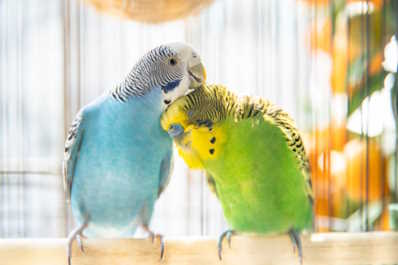The Comprehensive Guide to Training Your Feline Friend

Unlocking the Potential of Felinity: Why Train Your Cat?
Cats are notorious for their independent nature, but that doesn’t mean they can’t or won’t learn. Training your cat not only strengthens the bond between the two of you but also ensures they are well-behaved and mentally stimulated. Contrary to the stereotype, cats are intelligent and can carry out a variety of commands and tricks, which can be fun for both the cat and the owner. Training cats can also be a great source of exercise and can help shy cats build confidence. Ready to begin? Here’s our step-by-step guide to training your cat.
Feline Psychology 101: Understanding Your Cat’s Behavior
To effectively train your cat, you must first understand their natural behaviors. Cats are motivated by their basic instincts, which include the need to hunt, mark their territory, seek comfort, and avoid conflict. Your training approach is cat focused and should align with these instincts to persuade your cat to learn.
The most effective training methods for cats are based on positive reinforcement, rewarding good behavior with treats, play, or affection. Cats don’t respond well to punishment, as it can damage the bond of trust you’re trying to build.
Tools of The Trade: What You Need to Get Started
Before you begin the training process, gather the necessary tools. Here’s what you need:

High-Value Treats: Treats that your cat loves and can’t resist. These should be small, so they can be consumed quickly without filling them up.
Clicker (optional): A training clicker can be a useful tool for associating a specific sound with the behavior you want to reinforce.
A Quiet, Safe Space: Choose a training environment where your cat feels comfortable and free from distractions.
Time and Patience: Training sessions should be short, preferably just a few minutes, and conducted daily.
Mastering the Basics: Step-by-Step Training for Cats
Teaching Your Cat to ‘Sit’
Begin by taking a high-value treat and holding it just above your cat’s head.
Slowly move the treat back over their head; as you do this, their rear end should drop down naturally, into a sitting position.
Say the command “sit” as they do so, immediately marking the behavior with the clicker (if using one) and giving them the treat.
Repeat this process several times during each training session, gradually reducing the need for you to have the treat in your hand for them to sit.
Training ‘Stay’
Training your cat cats learn how to stay can be a little trickier, but is achievable with patience.
Ask your cat to sit and put your palm up, towards them, while firmly but gently stating “stay.”
Take half a step back. If they maintain the stay, return and reward them.
Gradually increase the amount of time and the distance you move away before returning to reward them.
Only reward them for maintaining the stay after you’ve given the command.
Teaching ‘Come’
Start in a secure, quiet area. Say the command “come” and pat the ground or use a call cue like kissing noises or using their name.
When they come to you, mark the behavior and give them a treat.
Increase the distance between you and your cat gradually, always marking and rewarding the behavior when they come to you.
By practicing one skill these basic commands every day, your cat will eventually learn to respond to them consistently.
Key Training Goals Beyond Commands

Litter Box Training
If you’re dealing with a kitten, place them in the litter box after meals and naps. If they then use the litter box, offer praise and a treat. For older cats, ensure the litter box is easily accessible and clean, and consider an open-top box if privacy isn’t as big of an issue.
Scratching Post Success
To introduce your cat to a scratching post or cat tree, place it in an area where the cat spends a lot of time, remember to reward them when they use it, and make sure it’s taller than they are when they’re fully stretched out.
The Power of Positive Reinforcement in Cat Training

Positive reinforcement is the most effective way to train cats. Each time your cat performs the desired behavior, immediately give a treat or play with them. This helps them learn that good things happen when they obey a command.
Remember, positive reinforcement is also about using affection and playtime as rewards. At the early stages of training, a physical reward like a pat on the head is usually a good starting point, especially if your cat doesn’t respond well to touch.
The Common Faux Paws of Cat Training
Punishment and Scolding
Never scold or punish your cat during training. Not only is it largely ineffective, but it can also cause anxiety and fear, leading to more behavioral issues.
Skipping Basic Training for Kittens
Starting training early is beneficial; kittens are like little sponges, and learning comes easier to them. Plus, establishing positive behaviors from a young age prevents many common issues.
Training Tips for the Particulars: Kittens vs. Adult Cats
Training Kittens
Kittens should learn bite inhibition and to play gently early on. If they bite or scratch during play, stop all action, so they don’t associate rough playtime with fun. This is a critical training element that is best addressed while they are young.
Training Adult Cats
It’s a myth that you can’t train adult cats. Regular training still provides the mental and physical stimulation they need. Start with the basics, and go at your cat’s pace, always keeping training sessions fun and rewarding.
Purrfecting Patience and Consistency
No one becomes a cat trainer overnight, and not every cat learns at the same pace. What’s essential is patience. Be consistent and practice regularly. The more consistent you are with cat training methods, the quicker your cat will learn.
Remember, each cat is an individual with their own unique set of experiences and preferences. Celebrate their progress, no matter how small, and always maintain a sense of fun during training. Your cat will pick up on your positive energy and be more willing to learn.
Cat Training Troubleshooting
If you are having problems training your cat, consider consulting a professional cat trainer or behaviorist. They can evaluate your training techniques and offer advice tailored to your cat’s needs.
Conclusion: The Long and Short of Cat Training
Training your cat may seem daunting, but with the right approach and tools, it can be an enriching experience for both of you. Be patient, stay positive, and enjoy the unique learning journey that is training a cat. Your well-mannered, responsive feline friend will thank you for it with their love and companionship, and perhaps an occasional obedient trick or two!
Frequently Asked Questions (FAQ)
How long does it take to train a cat?
The time it takes to train a cat can vary significantly depending on the cat’s age, temperament, and the specific commands or behaviors being taught. Some basic commands, like ‘sit’ or ‘come,’ can be learned in a few weeks with regular, daily practice, while more complex behaviors may take longer.
Can you really train a cat not to scratch furniture?
Yes, it’s possible to train cats not to scratch furniture by providing appealing alternatives like scratching posts or pads and using positive reinforcement and cat treats to encourage their use. Consistently redirecting your cat from the furniture to the scratching post and rewarding them for using it is key.
What do I do if my cat is not responding to training?
If your cat is not responding to training, it may help to reassess your techniques. Ensure you’re using positive reinforcement and keeping sessions short and enjoyable. * If your cat bites or challenges persist, consider consulting a professional cat trainer or behaviorist for personalized guidance.
Is it too late to train my adult cat?
It is never too late to train an adult cat. While kittens may learn a bit faster due to their developmental stage, adult cats are also capable of learning new behaviors and commands with patience and consistent practice.
How do I know if I’m doing clicker training correctly?
Successful clicker training depends on timing the click to mark the desired behavior exactly as it happens, followed immediately by a reward. This clear association helps your cat understand which behavior is being rewarded. Practice the timing with simple behaviors before moving on to more complex clicker training cats.





